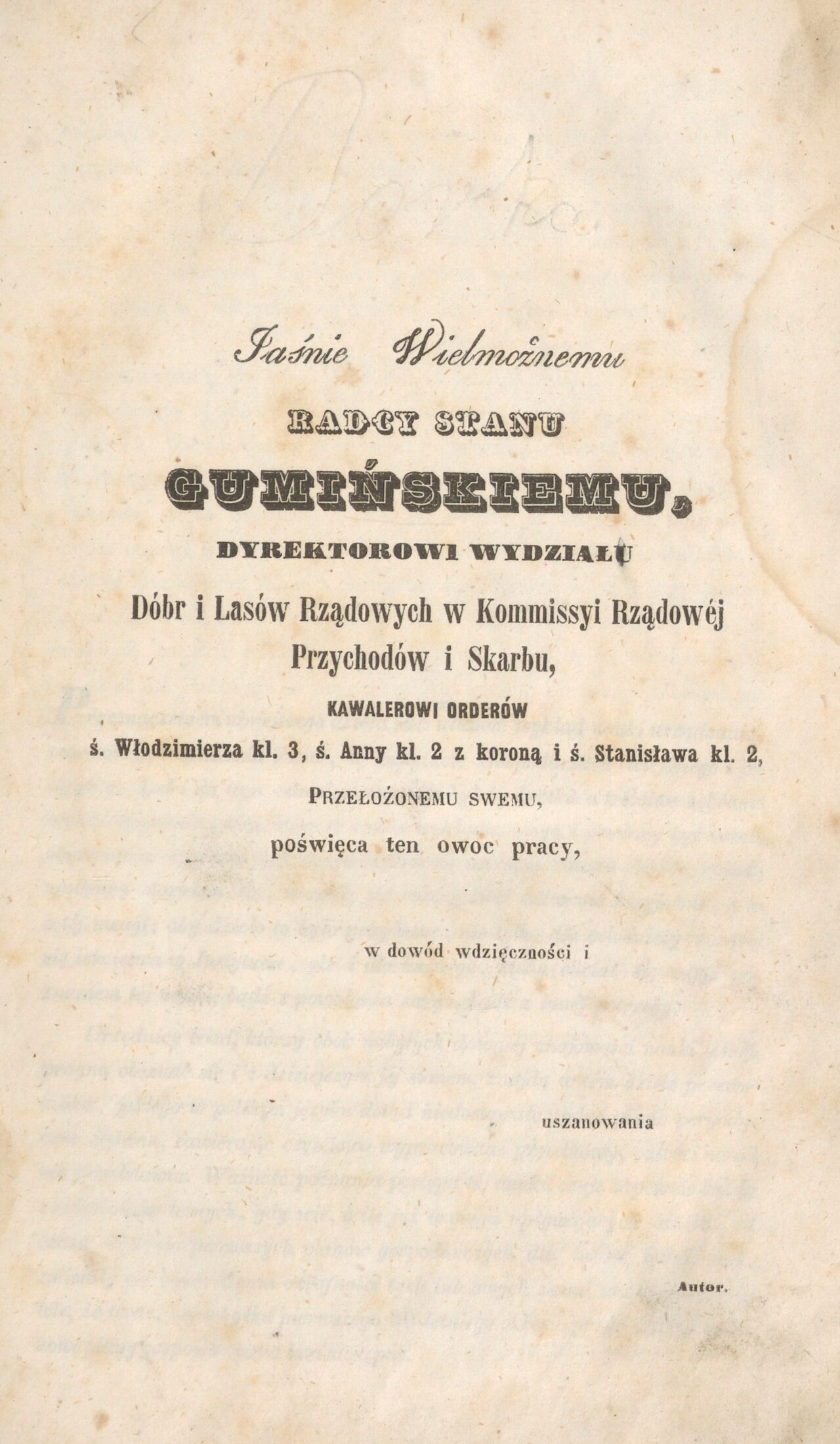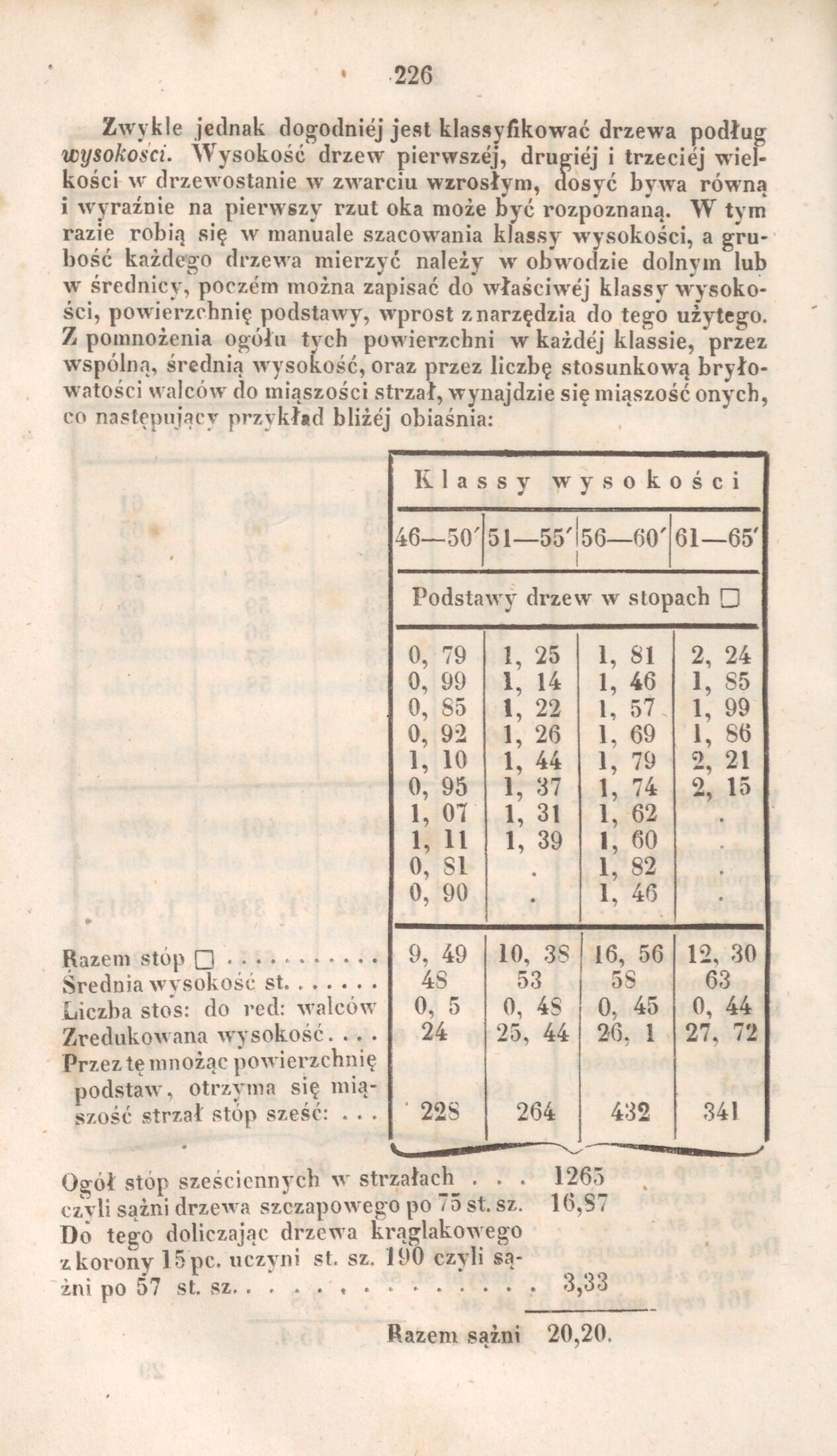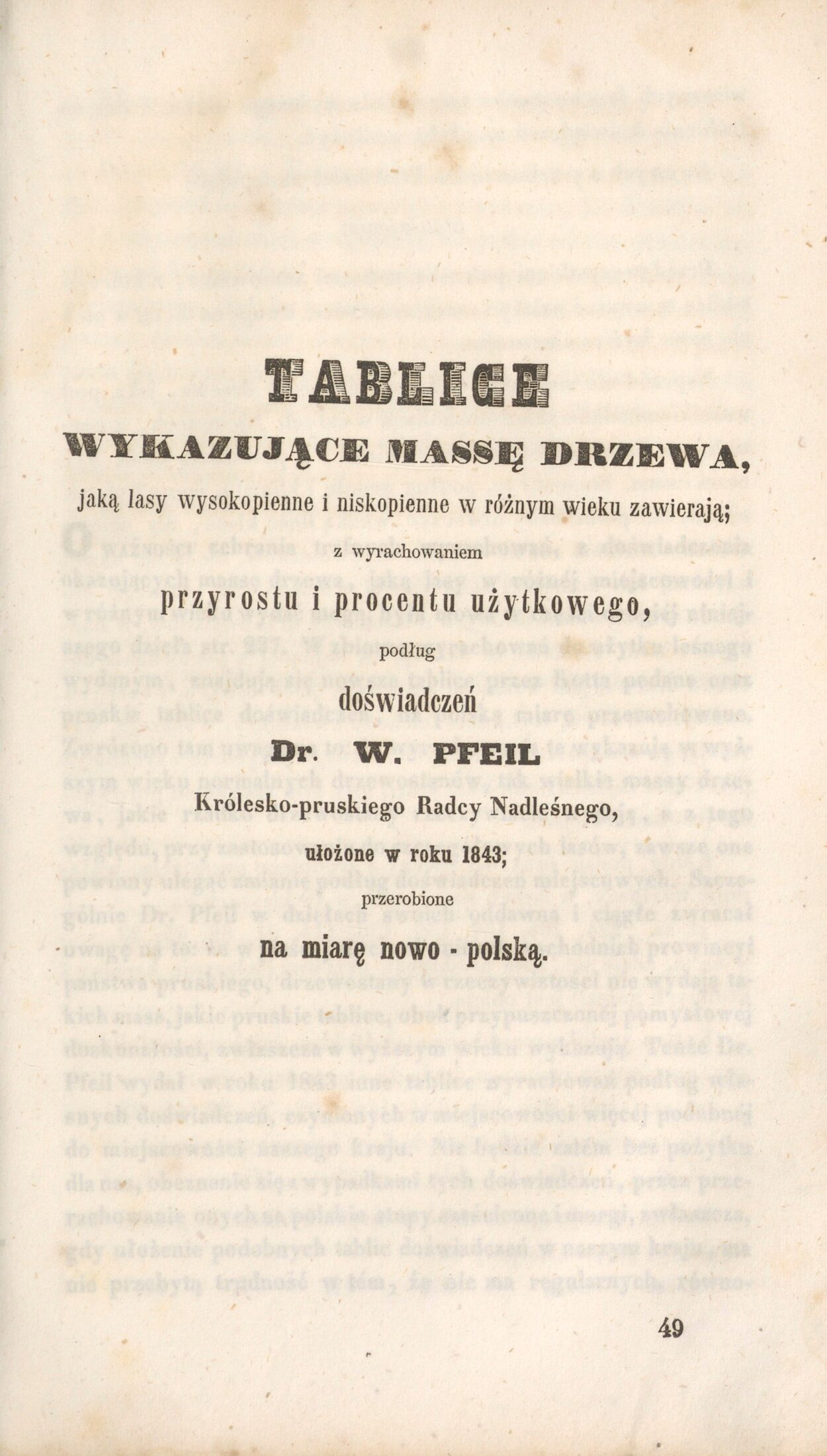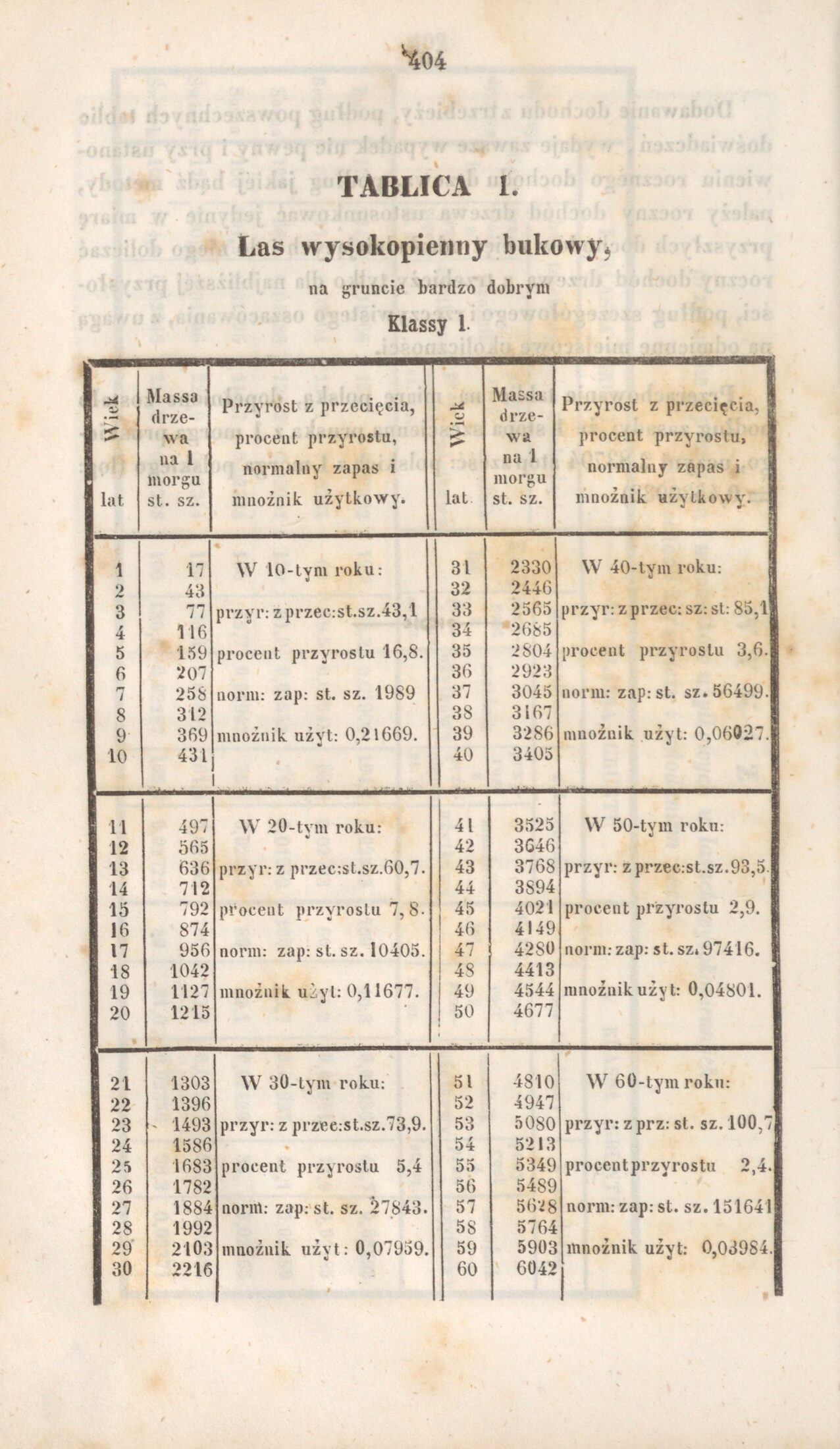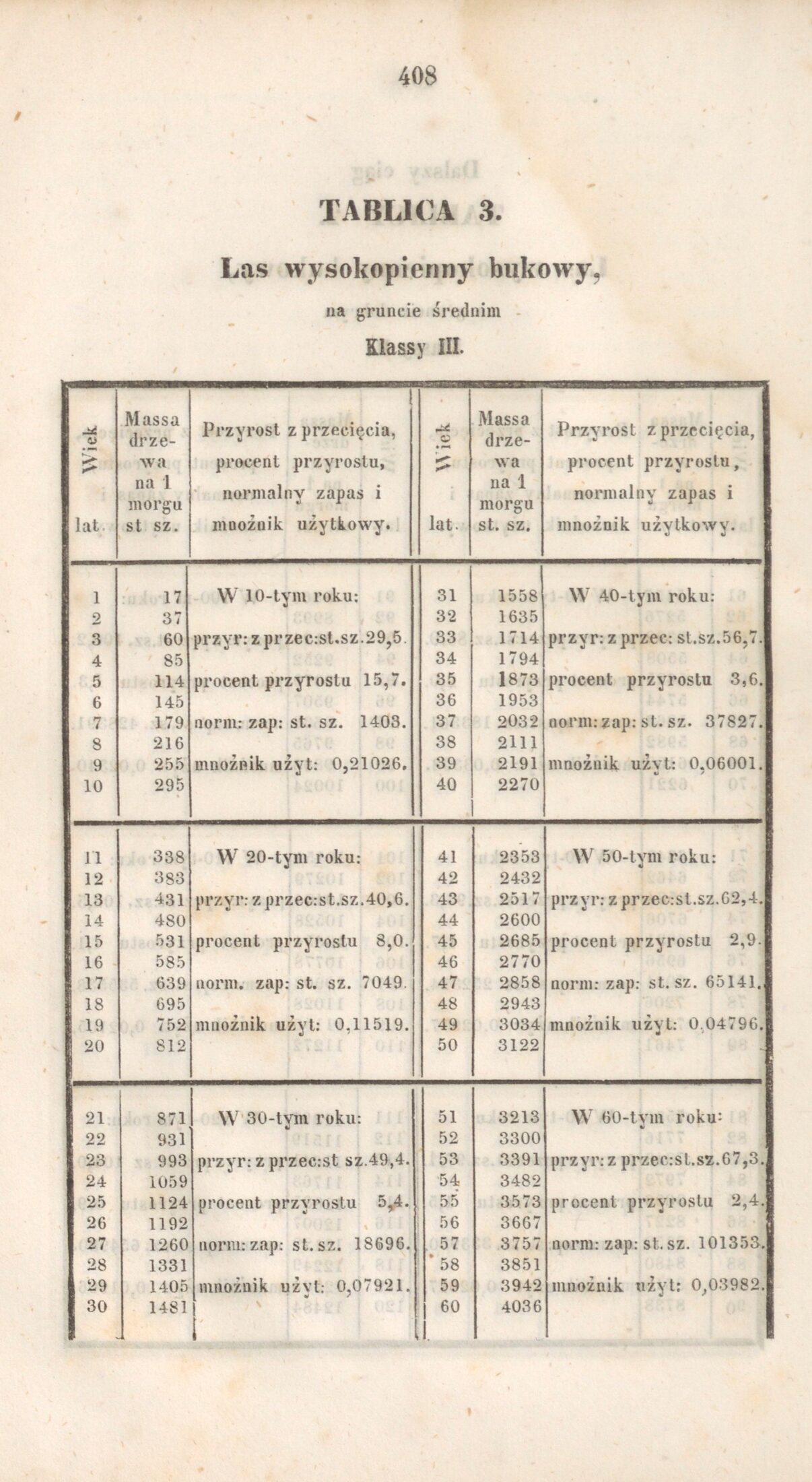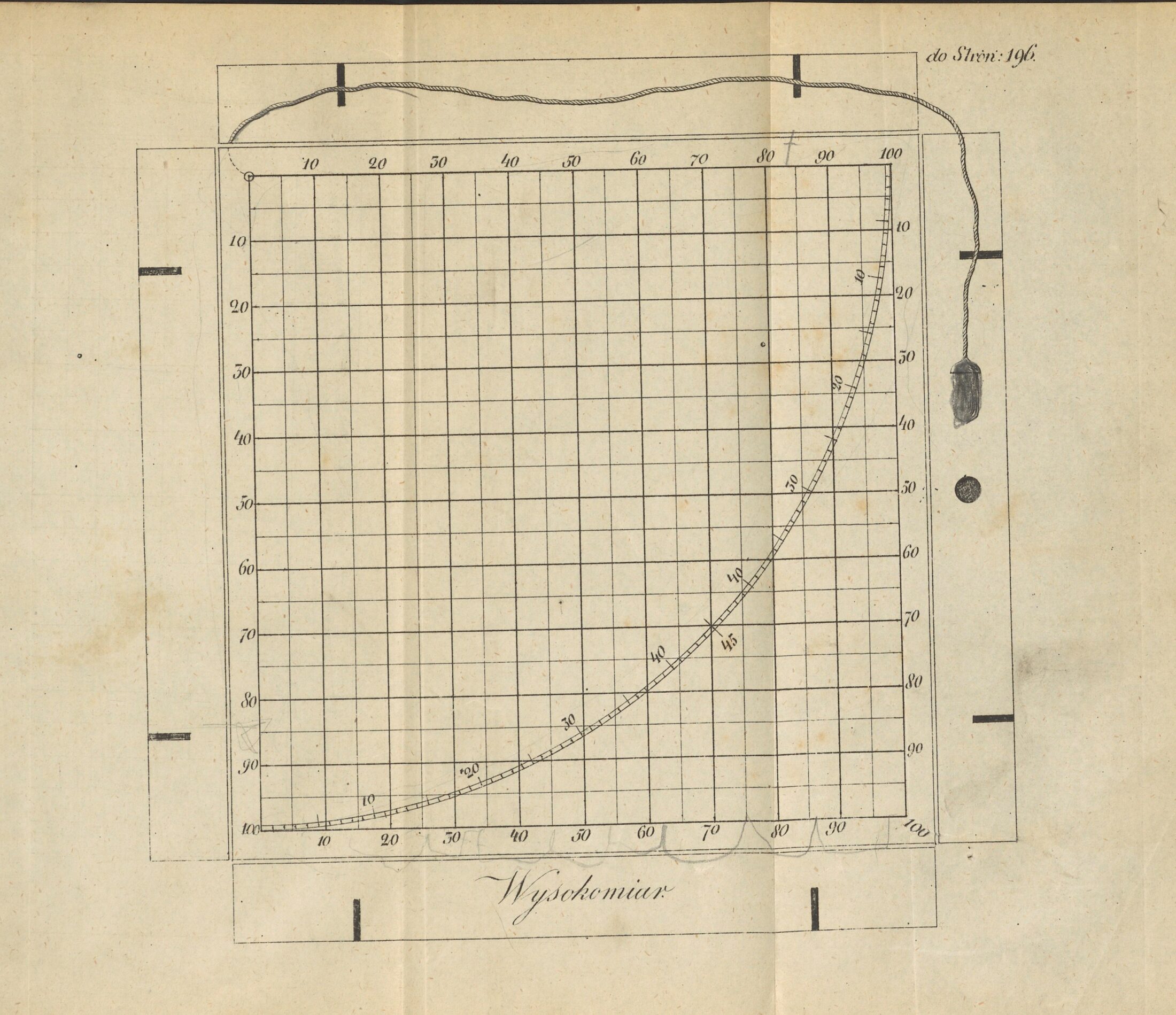There are two valuable collections in the library's collection: old prints (828 volumes from the 16th-18th centuries) and 19th-century polonica (about 8200 volumes), which make up the National Library Resource. Here we would like to present to you the most interesting and valuable collections that the library has in its collection. We also invite you to visit the Library of the NIKIDW Branch in Pulawy, where readers can directly acquaint themselves with selected titles.
***
Henke, Karol Fryderyk Gustaw
"Science of arranging, estimating and assessing forests"
Warsaw 1846
The forest has been present in human life since the dawn of time. It provided materials for the construction of the house and the equipment in it, provided food, medicine. In the forest, firewood was collected for fuel, raw materials were extracted from it for burning charcoal, producing tar and ash used in dyeing. Turf ore was dug and iron smelted from it. Fields were delineated on the leeks, where potatoes, broad beans, millet and oats were planted. Even in the post-war years, livestock grazed in the areas of larger forest complexes. The primeval backwoods rescued and provided shelter during wars, epidemics or other life-threatening situations.
The forest is one of the elements of our national natural, personal and cultural heritage. It is one of the assets that successive generations inherit from their predecessors. As a heritage, it is a continuous asset, continuing uninterruptedly, performing multiple functions and providing various benefits to future generations.
It is worth remembering that we are all equally responsible for the forests of our country, while the professionals and most competent managers of them are Polish foresters. It is thanks to their knowledge and experience that we can be sure that they are properly protected and used.
The written output of Polish foresters (scholars and practitioners) remains a lasting monument to our forest heritage and is worth recalling and fully documenting.
W Bibliotece Narodowego Instytutu Kultury i Dziedzictwa Wsi znajduje się bogata i interesująca literatura z zakresu leśnictwa. Są to zarówno publikacje książkowe, jak i wielotomowe roczniki czasopism dotyczących tej tematyki.

A particularly valuable book on forest management is "The Science of Arranging, Estimating and Evaluating Forests" by Karl Friedrich and Gustav Henke, published in 1846.
In the preface to his publication, Gustaw Henke writes: "Forestry officials [...] will find in this work a guide that the Polish language has not yet received; for the periodical Sylwan*, which contains partially worked out subjects, does not present the whole of science." Therefore, to the author we owe the creation of the first, respected and collected from many publications and lectures, textbook in Polish on forest management.
The work consists of three parts: Part One - On forest management; Part Two - On forest estimation; Part Three - On forest assessment.
"The doctrine of forest management indicates the principles, for the arrangement of the economic plan, covering the cultivation and use activities made in the forest in question, with the intention of drawing from it the greatest permanent or needs adequate income and in order to bring or approximate the forest to a perfect state, or finally maintain it in such a state," reads Part One.
In the preface to part two, the authors address the forest service, writing: "In order to establish the value of forests, it is necessary in the first place to calculate their material productivity [...], hence two actions are needed, estimation and appraisal [...] By estimation, therefore, of forests we mean the proper calculation of the mass of trees and the calculation of their growth [...] and the invention of the value of whole forests (e.g., for sale) we call appraisal."
On the other hand, in the third part, they share their views with readers, writing: "As a rule, there is no difference between assessing a forest and assessing some or other real estate; for it always goes to the invention of capital, which, by its percentages, spends as much income as the assessed land yields in profit." This is a valuable indication for forest-economists who are in charge of forests, who are able to make the benefit of the forest a source of income for the state.
A peculiar, informal fourth part of the book are 52 tables showing the mass of a tree.
"The Science of Arranging, Estimating and Rating Forests," written by Karl Friedrich and Gustav Henke, runs to 465 pages. It was published by the Samuel Orgelbrand Printing House in 1846.
Współczesny las nie przetrwa bez fachowej opieki leśnika. Po to poznawaliśmy i nadal poznajemy prawa natury, by kierować się nimi w rozumnym prowadzeniu gospodarstwa leśnego, a zasoby leśne umiejętnie wykorzystywać w zaspokajaniu naszych różnorodnych potrzeb. Mamy nadzieję, że literatura zgromadzona w Bibliotece Narodowego Instytutu Kultury i Dziedzictwa Wsi, w tym proponowana książka będą pomocą w utrzymaniu i wzbogacaniu dziedzictwa jakim jest las.
*Biblioteka Narodowego Instytutu Kultury i Dziedzictwa Wsi gromadzi czasopismo Sylwan od 1822 do 2019 roku (z przerwami).
Elaborated. Boguslaw Wisniewski
Editor. Joanna Radziewicz
Photo polona.pl - public domain



